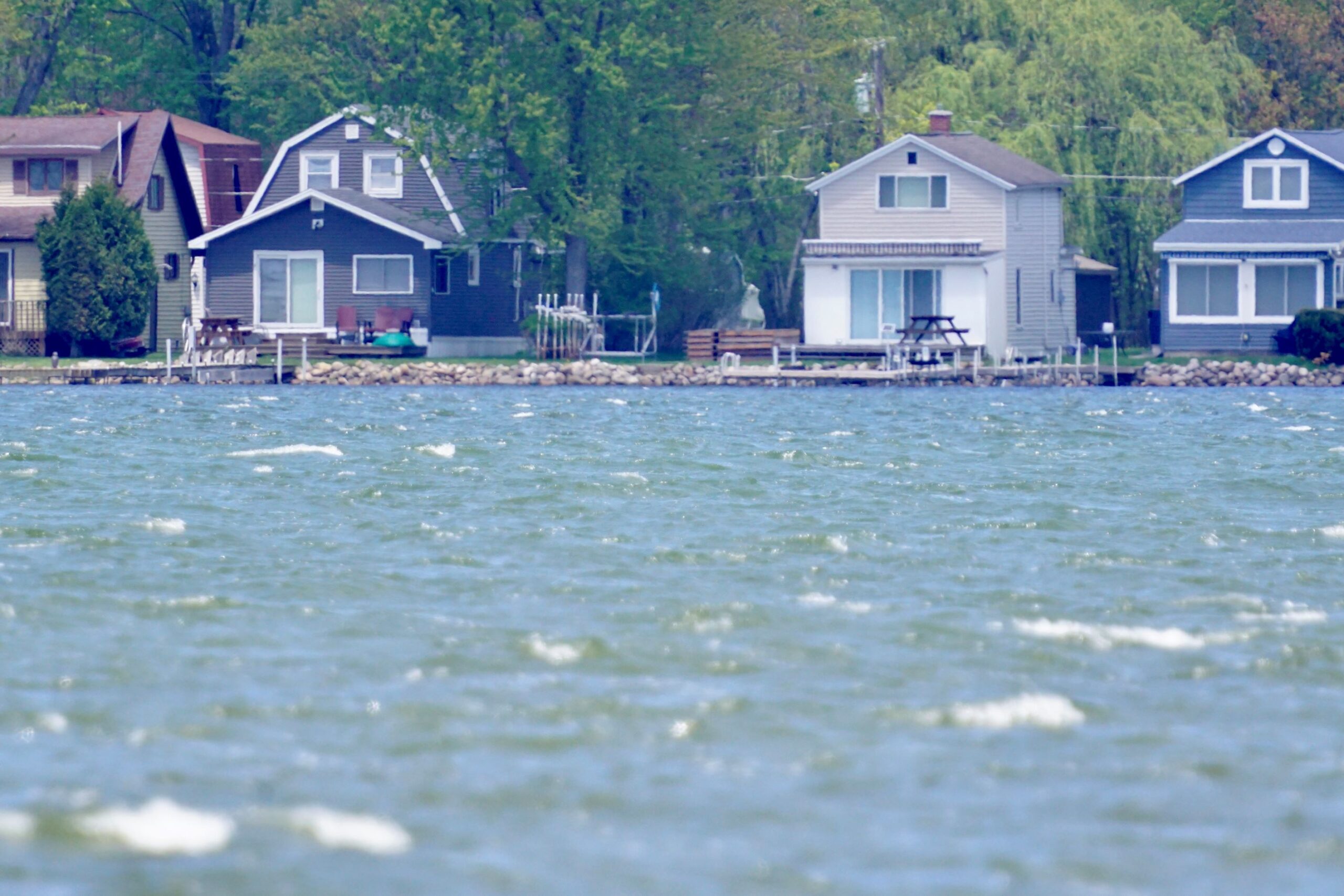As authorized by permits issued a week earlier, 125.6 acres of Chautauqua Lake were treated with the herbicide Aquathol-K on May 25 for the purpose of combating Curly-leaf Pondweed. These treatments took place in the Town of Ellery, the Village of Bemus Point, the Town of Ellicott, and the Town of Busti.
The permits state: “Warning/notification signs must be posted conspicuously at all public access sites including public boat launch sites and parks, within and adjoining the treatment area.” Signs for the 2023 treatments are posted at the Bemus Point, Lakewood, and Celeron launch sites only. No signs are posted at Long Point State Park, Prendergast Launch, Ashville Bay Marina or Smith Boys Marina. A sign for the 2022 treatment still remains at Ellicott Park. Another round of permitting for further treatments of additional plant species is anticipated this month.
All of this leads us to the observation of very significant early-season weed growth in the Bemus-Stow narrows and around the south basin of the lake. In our view, this growth is the predictable result of the cumulative effects of previous years’ treatments that have filled the lake floor with additional biomass whose nutrients have nourished this year’s bumper crop of pondweed.
By the way, while we’re on the subject of chemical treatments… over the last several years, the Consortium has raised the question “Are the waters of Chautauqua Lake slow-moving, or, in other words… quiescent? This condition of the water is a requirement for the application of certain herbicides and is clearly printed on the product label. Because the New York State Department of Environmental Conservation (DEC) has issued permits for these labeled herbicides in Chautauqua Lake, we need scientific evidence that the lake is quiescent during and shortly after their application. Why? The herbicide needs to stay where it was applied to prevent damage to plants outside of the permitted areas. Because lake current data on Chautauqua does not exist, Dr. John Dilley, a member of the Consortium’s Board of Advisors reviewed data taken at Lake Mendota in Madison, Wisconsin. Through comparison and calculation, he determined that the dominant currents in the middle of Chautauqua Lake are wind-driven when the wind is blowing more than 7 mph. This is important information when the DEC limits herbicide application only when the winds are above 10 MPH. Read John Dilley’s full report here.

